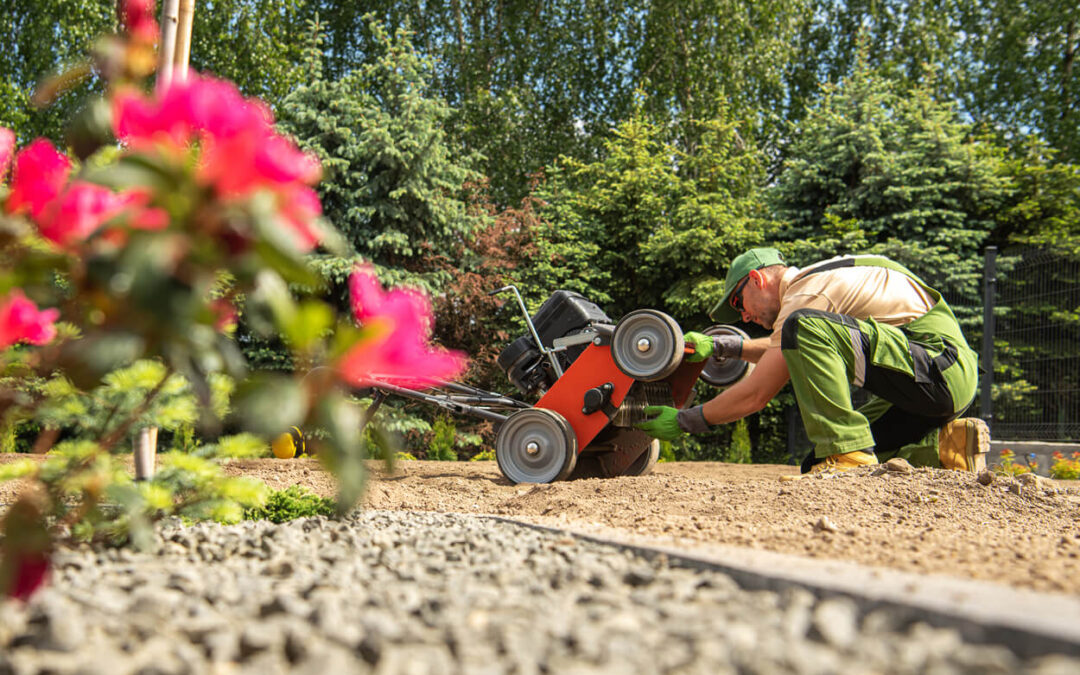When you ask most people if they keep the blades of their lawnmowers balanced, most people will give you a puzzled look. If you don’t know yet, the blades of your lawnmower must be balanced. At worst, you could end up with a costly accident if you ignore this fact.
So, why is it important, and how do you balance the blade?
Balancing A Lawnmower Blade – The Importance
Since most people don’t realize the importance of having the blade balanced, many lawnmowers suffer wear and tear that can easily be avoided. If you don’t want to waste money on buying or repairing your lawnmowers, then keeping the blades balanced can help you save a lot of money.
To balance your lawnmower blades properly, you must ensure that the blade’s weight is spread equally on either side. However, sharpening the mower blades typically causes the blades to become imbalanced.
When you are sharpening, you are removing materials from the blade. In most cases, the amount of material you remove is not equal, which then leads to the blade imbalance.
When something that can potentially rotate more than a thousand times in a single minute gets out of balance, it can cause big problems.
For example, when you’re mowing and you sense an odd vibration, it’s likely because your mower’s blades are out of balance. If you see that your grass is not being cut in a consistent manner, then the blades are probably not balanced correctly. If mowing takes significantly longer than it usually takes, you can likely determine that an unbalanced blade is the root cause.
An unbalanced blade can also cause loosening or snapping with any of the structural bolts. The extra wobbling caused by the unbalanced weight will also put a lot of pressure on the blade shaft, spindle, and the engine. Eventually, you’ll end up with a damaged mower that will need repairing. Or worse, you may have to replace it.
Also, remember that a lawnmower is a machine capable of very high RPM and has a blade. The risky part is that you are close to it when operating. Hence, keeping the blades balanced is not only a concern for the lawnmower but also for the operator.
How To Balance Lawn Mower Blades
When you sharpen the lawnmower blades on your own, there is a reasonable probability that the weight becomes unbalanced. This is because you likely have shaved off more material from one side.
This unevenness will cause significant vibration when the blades are turning. This, in turn, will cause internal nuts and bolts to loosen and accelerate the wear and tear the machine suffers.
It’s easy to check for the blade’s balance and ensure that it’s balanced before re-attaching it.
The following is a step-by-step guide for balancing the blades.
Step one: Use A Nail
Drive a nail through a wall plank with a hammer. The lawnmower blades will have a hole in the center. Insert the blade into the nail via the hole.
If you want to be more accurate, then it’s best to get a lawn mower blade balancer. It also makes the task easier.
Step two: Turn the Blade A Little
Rotate the blade a quarter to the right and keep an eye on it. If the blade level stays even and stays on the same spot, you have nothing to worry about.
On the other hand, if it spins back around to where it began or the blade is uneven, then this means your blade is unbalanced.
You’d want to mark which side of the blade is heavier, so you’ll know which side to work on later.
Step three: Balancing the Blade
The way you balance a blade is by using a smooth file. Remember that heavier side on the blade? Well, you’d want to start filling it to remove some materials and make it lighter.
Step four: Check the Balance Again
Wipe the newly filed blade with a damp cloth. Then, place the blade again into the nail or lawn mower blade balancer.
If the blade’s two halves are balanced, you can proceed to reinstall it. If not, you must keep filing and checking for balance until you get it right.
Sharpening The Blades, The Right Way
Since the most common cause of an imbalanced blade is sharpening, this article will provide you with a guide on how to sharpen the blades properly.
- Assemble the needed tools and equipment – put together your work equipment. You’ll need your personal protective equipment to be as safe as possible.
- Detach the spark plug – this keeps the motor from starting by accident.
- Tilt the motor sideways – when tilting, make sure the carburetor and air filter are on the high side. By doing so, the air filter would be protected against oil and gas seeping or leaks.
- Detach the blade – Use a long-handled wrench to loosen the nut. Turn the bolt counterclockwise, and then remove the blade.
- Clear away the dirt and debris – remove rust and debris from your blade with a steel brush.
- Sharpen the blade – sharpen each cutting edge with a file or grinder. When filing, make sure you keep the original angle and file solely in that direction, removing equal quantities of steel from both edges.
- Place a marking on the blade – most homeowners mistakenly reinstall a sharpened mower blade upside down. Of course, once flipped, the blade won’t cut. Mark the upside of the blade. It helps you tell which way is which and reinstall correctly.
- Make sure the blade is balanced – do the steps mentioned above when balancing the lawnmower blade.
- Reinstall the lawnmower blade – once the blade is balanced, all you need to do is reinstall it. Also, don’t forget to re-attach the spark plug if you pulled it out in the previous steps.
Wrapping It All Up
So that’s it for now. After reading this article, you should already know the importance of having the lawnmower’s blade balanced. Furthermore, you should already know the process of how to keep it balanced.

